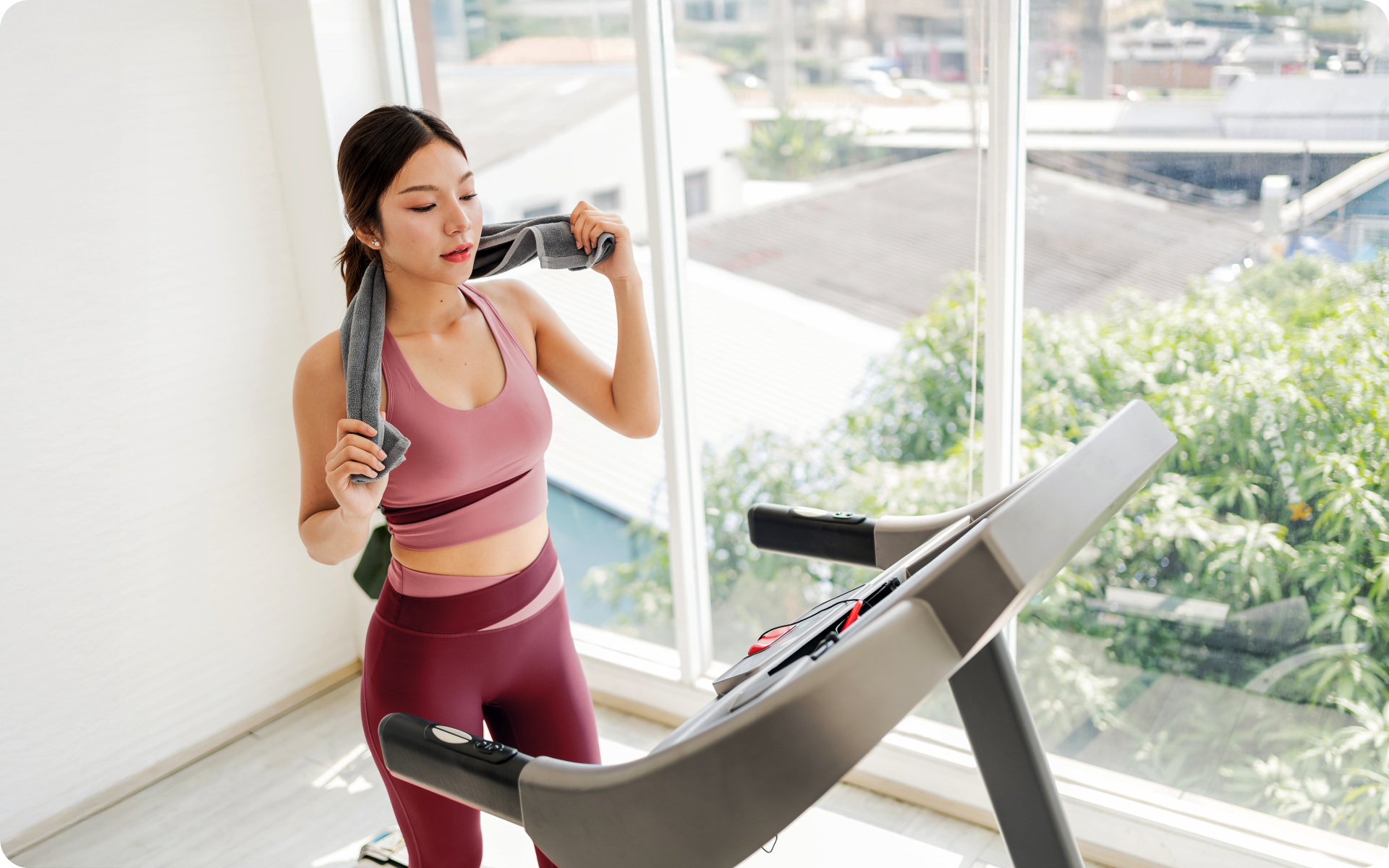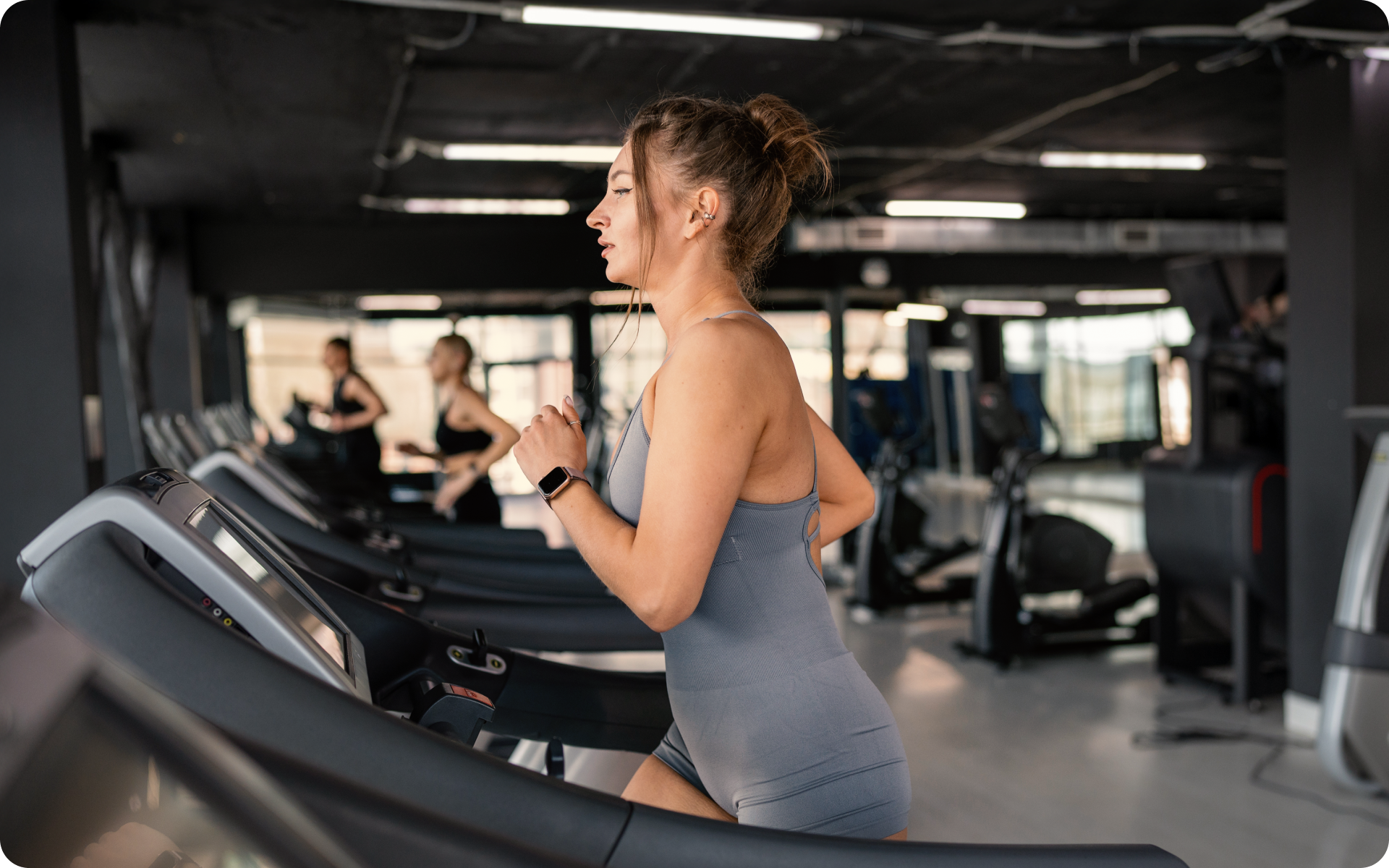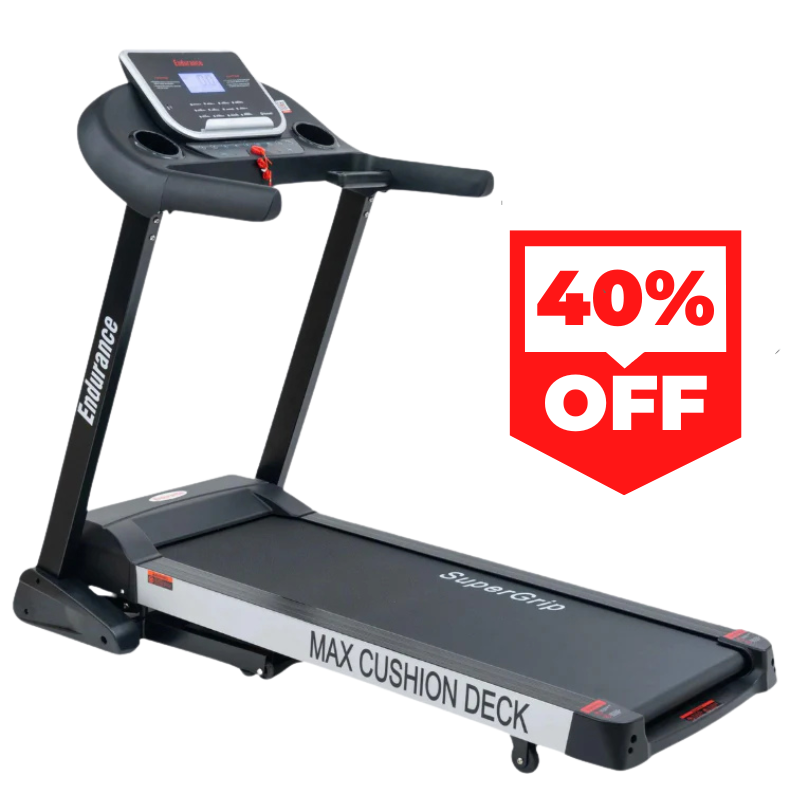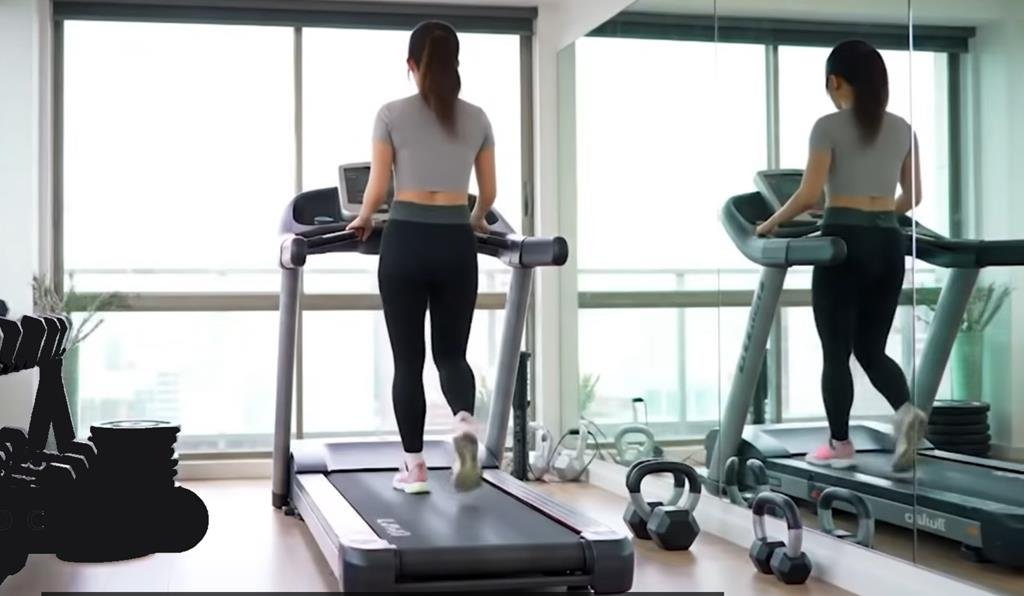Are you worried that using a treadmill might hurt your bad knees? You’re not alone.
Many people with knee problems wonder if walking or running on a treadmill is safe or if it will make the pain worse. The good news is, with the right approach, a treadmill can actually help strengthen your knees and improve your overall health.
But how do you know if it’s the right choice for you? Keep reading to find out how treadmills affect bad knees and what you can do to protect yourself while staying active. Your knees deserve care—and you deserve the best advice.

Treadmill Impact On Knee Health
Many people ask if treadmills are good for bad knees. It is important to know how treadmill use affects knee health. This guide looks at the impact of treadmills on knee joints.
We compare treadmill running with outdoor running and discuss common knee problems. This helps you make safer choices for your knee care.
How Treadmills Affect Knee Joints
Treadmills provide a flat, even surface. This reduces stress on knee joints. The cushioning on many treadmills absorbs some impact. This can lower the force that reaches your knees.
Slow to moderate treadmill walking or running can be easier on knees than hard surfaces. Yet, poor form or high speeds may still cause pain or injury. It is best to start slow and pay attention to your body.
Comparison With Outdoor Running
| Aspect | Treadmill | Outdoor Running |
| Surface | Flat, cushioned | Varied, often hard |
| Impact | Lower due to shock absorption | Higher, uneven terrain |
| Knee Stress | Less stress on joints | More stress on joints |
| Control | Speed and incline adjustable | Less control over terrain |
Using a treadmill lets you control speed and incline. This control can help avoid sudden knee strain. Outdoor running may cause more knee stress due to uneven ground.
Common Knee Issues And Treadmill Use
Some knee problems can get worse with treadmill use. It is important to recognize these issues and adjust your workout.
- Osteoarthritis may cause pain if impact is high.
- Tendonitis can worsen with repetitive motion.
- Meniscus injuries need low-impact exercises.
- Patellofemoral pain may improve with proper treadmill settings.
Warming up, stretching, and using correct footwear helps protect knees. Consult a doctor before starting treadmill exercise if you have knee pain.
Benefits Of Treadmill For Knee Pain
Treadmill exercise can help people with bad knees stay active. It offers a way to walk without causing too much stress on joints.
Using a treadmill allows control over speed and movement. This control can reduce knee pain and improve strength.
Low-impact Exercise Advantages
Walking on a treadmill is gentle on the knees. It uses less force than running outside on hard surfaces.
This low-impact exercise helps keep knee joints moving. It reduces stiffness and supports healing.
- Less pressure on knee joints
- Improves joint flexibility
- Supports muscle strength around knees
Controlled Environment For Safety
Treadmills offer a safe place to exercise indoors. You can avoid uneven ground and weather problems.
Stable surfaces reduce the risk of falls or knee injury. Safety features like handrails give extra support.
- Even and cushioned surface
- Protection from bad weather
- Handrails for balance and support
Adjustable Speed And Incline Features
Treadmills let you change speed to match your comfort level. You can start slow and increase pace safely.
Incline settings help strengthen different leg muscles. They allow varied workouts without extra strain on knees.
- Start with low speeds for comfort
- Increase speed as strength improves
- Use incline to target different muscles
Expert Tips For Using Treadmills Safely
Treadmills can be helpful for people with bad knees. They offer a controlled surface that reduces impact. Using them safely is very important to avoid injury.
This guide shares expert tips on how to protect your knees while using a treadmill. Follow these steps for a safer workout.
Proper Footwear Recommendations
Wearing the right shoes helps protect your knees. Good shoes provide support and absorb shock. This reduces stress on your joints.
- Choose shoes with good arch support
- Look for cushioned soles to absorb impact
- Use shoes designed for running or walking
- Replace shoes every 300 to 500 miles
- Make sure shoes fit well and feel comfortable
Warm-up And Cool-down Routines
Warming up prepares your muscles and joints for exercise. Cooling down helps your body recover. Both reduce the chance of knee pain.
| Routine | Duration | Example |
| Warm-Up | 5 to 10 minutes | Slow walking on treadmill |
| Cool-Down | 5 to 10 minutes | Slow walking and stretching |
Correct Running And Walking Techniques
Using good form helps protect your knees. Avoid heavy heel strikes and keep a steady pace. This lowers knee stress during workouts.
- Keep your feet flat and land softly
- Maintain a slight bend in your knees
- Use a natural stride length
- Keep your back straight and shoulders relaxed
- Do not lock your knees when standing

Alternatives To Treadmill For Knee Care
Treadmills can be hard on bad knees. Many people look for safer ways to exercise. Good knee care needs low-impact options.
This guide shows alternatives that protect your knees. These choices help you stay active and avoid pain.
Low-impact Cardio Options
Low-impact cardio is gentle on joints but keeps your heart strong. These exercises reduce stress on knees.
- Swimming helps move joints without pressure.
- Cycling on a stationary bike avoids pounding knees.
- Walking on soft surfaces like grass or track.
- Using an elliptical machine for smooth motion.
- Rowing machine for full-body low-impact exercise.
Strengthening Exercises For Knees
Strong muscles support your knees and reduce pain. You can do simple moves at home or gym.
| Exercise | Target Area | Benefit |
| Straight Leg Raises | Quadriceps | Builds front thigh muscles |
| Hamstring Curls | Back Thigh | Improves knee stability |
| Calf Raises | Calves | Supports knee movement |
| Wall Squats | Thighs and Glutes | Strengthens around knee |
| Step-Ups | Leg muscles | Improves balance and strength |
Physical Therapy Approaches
Physical therapists use special methods to help knees heal and get stronger. They tailor care to your needs.
Common physical therapy methods include:
- Manual therapy to reduce pain and increase movement.
- Guided exercises to improve knee function.
- Use of heat or cold packs to ease swelling.
- Balance and coordination training for safer movement.
Signs To Avoid Treadmill Workouts
Treadmill workouts can be helpful for many people. But if you have bad knees, you must watch for warning signs. Some signs mean you should stop treadmill exercises to protect your knees.
This guide helps you know when treadmill workouts are not safe. It also shows how to adjust your exercises to keep your knees safe.
Recognizing Knee Pain Warning Signs
Knee pain is not normal during workouts. If you feel sharp or constant pain, stop immediately. Swelling or stiffness after running on a treadmill can also be a warning.
Other signs include a popping sound or your knee feeling unstable. These signs mean your knee needs rest and care. Ignoring them can cause more damage.
- Sharp or constant knee pain
- Swelling or stiffness after exercise
- Popping or clicking sounds in the knee
- Knee feels weak or unstable
When To Consult A Specialist
If knee pain lasts more than a few days, see a doctor. A specialist can check for injuries or arthritis. Early care helps prevent worse problems later.
Visit a specialist if your knee swells a lot or you cannot walk well. Getting advice early helps you avoid serious damage and find safe workouts.
- Pain lasting more than 3 days
- Severe swelling or redness
- Difficulty walking or bending the knee
- Knee locking or giving way
Modifying Workouts For Knee Safety
You can still exercise with bad knees. Lower the treadmill speed and incline. Use shorter workout times and take breaks often.
Try adding low-impact exercises like cycling or swimming. Strengthening muscles around your knee helps support it. Always warm up before starting.
- Walk slowly on the treadmill
- Keep workouts short and rest often
- Add low-impact exercises like cycling
- Strengthen leg muscles with special exercises
- Warm up before every workout

Frequently Asked Questions
Is Treadmill Exercise Safe For Bad Knees?
Treadmill exercise can be safe for bad knees if done with proper form. Use low impact settings and walk at a comfortable pace. Avoid running or steep inclines. Consult a doctor or physical therapist before starting to ensure it suits your knee condition.
How Does Treadmill Walking Benefit Knee Health?
Treadmill walking strengthens muscles around the knee, improving joint support. It increases flexibility and promotes blood flow. Controlled speed and cushioning reduce impact compared to outdoor walking. This helps reduce knee pain and stiffness in many cases.
Should I Use Incline On Treadmill With Bad Knees?
Using an incline increases knee stress. For bad knees, keep the treadmill flat or at a very low incline. This minimizes joint pressure and prevents aggravation. Focus on slow, steady walking rather than incline workouts.
Can Treadmill Worsen Knee Pain?
Improper use or high-impact treadmill workouts can worsen knee pain. Running or fast jogging may strain the joint. Always start slow, use cushioning, and stop if pain increases. Proper guidance is essential to avoid worsening symptoms.
Conclusion
Treadmills can be good for those with knee problems. They offer controlled exercise. Choose a treadmill with good shock absorption. Start with a slow pace. Gradually increase speed as comfort allows. Consult a doctor before starting. Listen to your body.
Rest if you feel pain. Treadmills can aid in gentle rehabilitation. They provide a safer option than outdoor running. Consistent use can strengthen knee muscles. This reduces pain over time. Always prioritize safety and comfort. Stay active to maintain overall health.



